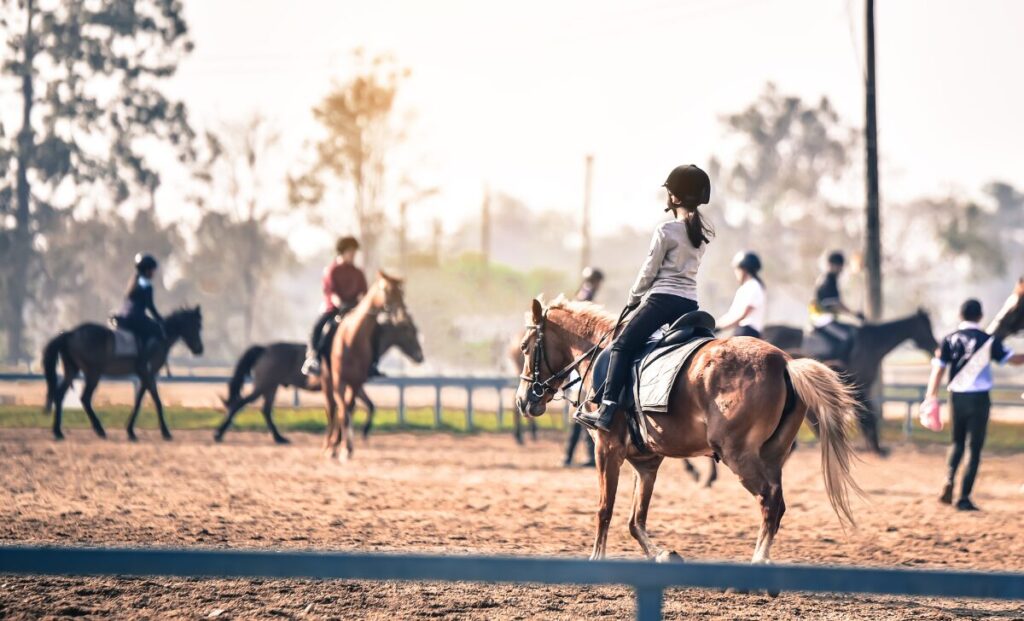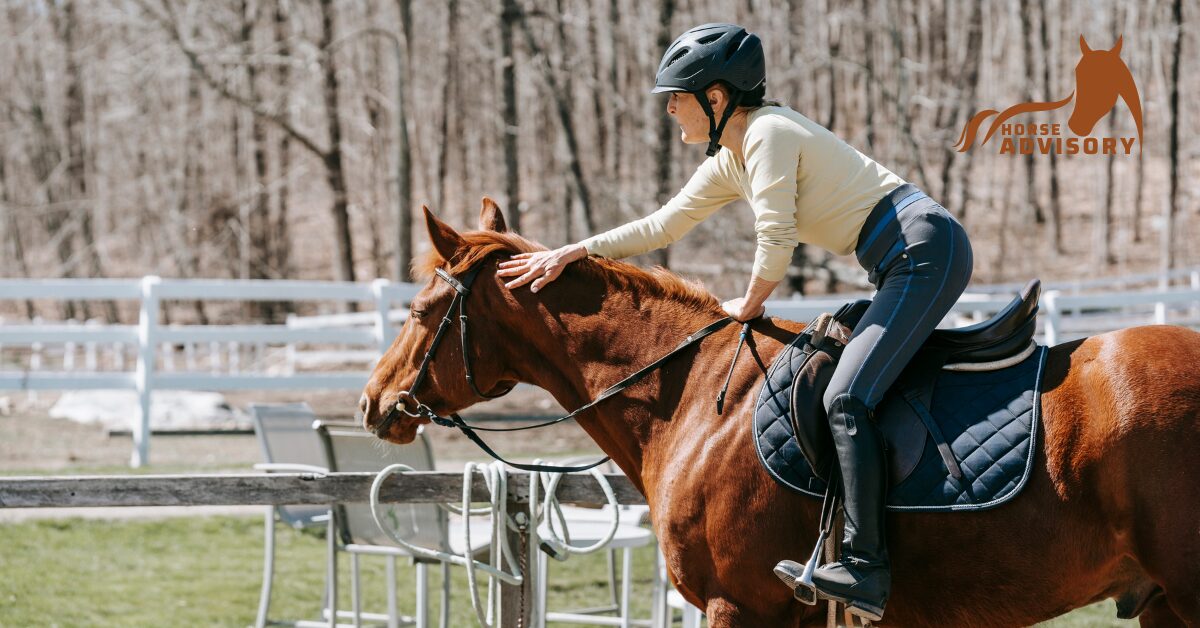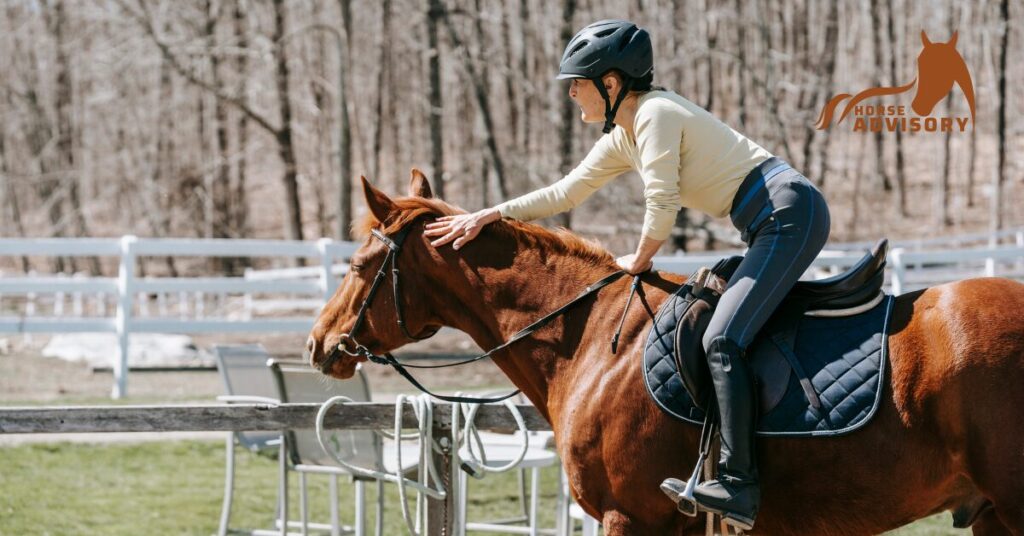Arabian horses are renowned for their exceptional stamina, agility, and resilience, making them prime candidates for endurance riding. Endurance riding tests the limits of horse and rider over long distances, emphasizing speed, stamina, and efficient use of energy. Proper training is crucial to ensure that Arabian horses perform at their best while maintaining their health and well-being. This blog will delve into essential aspects of training Arabian horses for endurance riding, providing valuable insights for trainers and owners.
What is Endurance Riding?
Endurance riding is a competitive equestrian sport that tests the stamina, speed, and fitness of both horse and rider. It involves long-distance races that typically range from 25 to 100 miles, although some events extend even further. The primary objective is to cover the course in the shortest possible time while ensuring the horse’s health and welfare. Unlike other equestrian sports focused on precision or short bursts of speed, endurance riding emphasizes sustained performance over extended periods.
The Role of Arabian Horses in Endurance Riding
Arabian horses are the quintessential breed for endurance riding. Their unique physical and physiological traits make them exceptionally suited for this grueling sport. Here’s why Arabian horses shine in endurance challenges:
- Natural Endurance: Arabian horses have been bred for centuries in harsh desert conditions, which has ingrained a high level of stamina and resilience. This natural endurance allows them to maintain steady paces over long distances.
- Efficient Metabolism: Arabian horses possess a highly efficient metabolism that enables them to convert energy sources more effectively. This efficiency means they can sustain prolonged physical activity with minimal fatigue.
- Strong Cardiovascular System: The cardiovascular system of Arabian horses is robust, allowing for effective oxygen delivery to muscles. This strength is crucial for maintaining performance during long rides and recovery after intense exertion.
- Lightweight and Agile: Arabian horses are generally lighter and more agile than many other breeds. This lighter build reduces the physical strain during long rides and improves maneuverability on various terrains.
Why Arabian Horses Excel in Endurance Riding
Arabian horses excel in endurance riding for several reasons:
- Longevity and Durability: Their ability to recover quickly from physical exertion makes them durable competitors over multiple events and years.
- Mental Toughness: Arabian horses are known for their intelligent and spirited nature. This mental toughness helps them stay focused and determined during long, challenging rides.
- Adaptability: These horses are highly adaptable to different environments and climates. Whether competing in arid deserts or humid forests, Arabian horses can adjust to various conditions, maintaining their performance levels.
- Efficient Cooling Mechanism: With a high skin surface area relative to their body size, Arabian horses can dissipate heat more efficiently, an essential trait for maintaining stamina during long rides in varying weather conditions.

Training for Distance
The initial training phase for an endurance horse, particularly one that is 4 to 5 years old and has not undergone formal training, is crucial. This phase typically spans several months and emphasizes building a solid foundation. The goal is to develop the horse’s musculoskeletal, cardiovascular, thermoregulatory, and gastrointestinal systems, along with mental strength. During this period, the training should be centered around long, slow distance (LSD) work. This foundational training ensures that the horse gradually adapts to the physical demands of endurance riding.
Long, slow distance work is the cornerstone of endurance training. This involves steady, moderate-paced rides over varying distances, allowing the horse to build aerobic capacity and muscular endurance without undue stress. Initial walking sessions should cover 5 to 10 kilometers (3 to 6 miles) three to four times a week. These sessions include short periods of trotting to introduce the horse to varied paces. As the horse adapts, the duration and distance of these rides can be gradually increased.
Conditioning for endurance riding is a progressive process. After the foundational phase, the horse’s training shifts to increasing distances and introducing more intense workouts. Longer rides can be incorporated, with 2 to 3 hours of mostly walking and some trotting, progressing to a total distance of 20 kilometers (12 miles). The pace should average around 10 kilometers per hour (6 miles per hour), followed by a rest day. The key is to monitor the horse’s recovery and adjust the training intensity accordingly.
- Individualized Training Plans: Each horse is unique, and it is essential to tailor the training plan to the individual horse’s needs and responses. Regular monitoring of the horse’s progress is critical. Pay attention to any signs of discomfort or injury, such as back pain, girth rubs, lameness, leg injuries, or mouth rubs from the bit. Addressing these issues promptly can prevent long-term problems. Routine hoof and dental care are also vital for maintaining overall health and performance.
- Varied Terrain Training: Training on varied terrains is beneficial for preparing the horse for different conditions encountered during endurance rides. Walking through different types of countryside helps accustom the horse to various environments, such as rocky paths, sandy surfaces, and slippery or firm ground. This exposure builds the horse’s confidence and self-preservation instincts, crucial for navigating challenging courses. Training on hills and uneven terrain also strengthens the horse’s muscles and improves balance and coordination.
Walking and trotting sessions form the foundation of endurance training. Initial sessions should focus on walking with short trotting intervals. As the horse’s fitness improves, the duration and intensity of trotting can be increased. For instance, walking and trotting in 5-minute blocks, gradually extending the trotting periods, helps build endurance. The goal is to ensure that the horse recovers well after each workout, evidenced by a return to normal heart and respiratory rates.
As the horse’s fitness increases, longer training sessions can be added gradually. The distance covered in each session can be increased by 5 kilometers (3 miles) per week, progressing to a total distance of 40 kilometers (25 miles). Training should include a mix of walking, trotting, and some cantering, depending on the horse’s response. Monitoring the horse’s heart rate during and after exercise is a useful measure of fitness and recovery.
Regular veterinary inspections are essential throughout the training process. These inspections ensure that the horse remains fit and healthy, ready for competition. Veterinary checks during training rides and competitions help detect any issues early, allowing for timely interventions. Horses should be inspected and rested at least every 40 kilometers (25 miles) during longer rides, providing opportunities to assess their fitness and address any problems.
Preparing for longer endurance rides, such as 80 kilometers (50 miles) or championship rides of 160 kilometers (100 miles), requires meticulous planning and extended training periods. Horses should progressively build up to these distances through long, slow rides, ensuring they are not rushed and have adequate time to develop the necessary stamina and resilience. Horses that undergo thorough, gradual preparation are more likely to have long, successful endurance careers.
Training the musculoskeletal system
Training the musculoskeletal system of Arabian horses for endurance riding is a crucial aspect of their overall conditioning and performance. Gradual conditioning is essential to avoid injury and ensure the horse builds strength and stamina progressively. Start with long, slow distance (LSD) rides to develop the horse’s aerobic capacity and muscular endurance.
These rides should be conducted at a steady pace over extended periods, allowing the muscles to adapt to prolonged exertion. Incorporating hill work and varied terrain helps in engaging different muscle groups, promoting balanced development. This varied training not only strengthens the muscles but also improves the horse’s coordination and stability, which are vital for navigating diverse courses during competitions.
Specific exercises such as trotting and cantering on different surfaces further enhance the musculoskeletal system. Trotting on soft ground can increase muscle strength without putting excessive strain on the joints, while cantering on more challenging terrain can build cardiovascular fitness and muscular endurance simultaneously.
Interval training, which involves alternating between periods of high-intensity work and rest, can significantly improve the horse’s anaerobic capacity and overall performance. By conditioning the musculoskeletal system through these varied and strategic exercises, Arabian horses can achieve optimal health, reduced risk of injury, and enhanced performance in endurance riding competitions.
Training Energy Systems in the Muscle
Aerobic training plays a pivotal role in enhancing the muscle’s enzyme systems, significantly boosting their aerobic capacity. This adaptation not only delays the onset of fatigue but also aligns with the goal of increasing the distance an endurance horse can travel. Typically, these beneficial changes become evident after a few months of consistent training, allowing horses to better handle extended periods of exertion.
One crucial adaptation from aerobic training is the improved ability of muscles to oxidize fat. Utilizing fat for energy has a glucose-sparing effect, which prevents rapid glycogen depletion and extends the time before fatigue sets in. Increasing dietary fat, either through complete feeds or added vegetable oils, also enhances this fat oxidation process.
Fat is a preferred energy source for endurance horses because it generates less heat during digestion compared to roughage, making it a “cooler” feed. It can take one to three months for a horse’s muscles and digestive system to fully adapt to increased dietary fat, but as training intensity ramps up, gradually incorporating more fat can significantly enhance endurance and provide a steady, high-density energy source.
After intense exercise, muscle glycogen replenishment typically takes two to three days, underscoring the importance of rest and recovery post-exertion. However, in multi-day endurance events, this extended recovery period isn’t always feasible, which can lead to decreased performance over successive days. Fatigue not only diminishes overall performance but also impairs coordination, increasing the risk of stumbling and injury. Therefore, careful management and strategic planning are essential to maintain peak performance and prevent injuries during endurance competitions.
Conclusion
Understanding the basics of endurance riding provides insight into the demands and rewards of this competitive sport. Arabian horses, with their innate endurance, efficient metabolism, and strong cardiovascular systems, are ideally suited for these challenges. Their ability to cover vast distances with minimal fatigue, combined with their mental toughness and adaptability, makes them the perfect partners for riders aiming to excel in endurance riding. Whether you are a seasoned trainer or a new owner, harnessing these traits can lead to a successful and fulfilling endurance riding experience.





